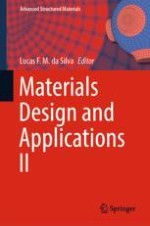2019 | OriginalPaper | Buchkapitel
Effect of Additives on the Machinability of Glass Fiber Reinforced Polymer
verfasst von : Jean-François Chatelain, C. M. Ouellet-Plamondon, B. Lasseur, H. Kuate-Togue
Erschienen in: Materials Design and Applications II
Aktivieren Sie unsere intelligente Suche, um passende Fachinhalte oder Patente zu finden.
Wählen Sie Textabschnitte aus um mit Künstlicher Intelligenz passenden Patente zu finden. powered by
Markieren Sie Textabschnitte, um KI-gestützt weitere passende Inhalte zu finden. powered by
